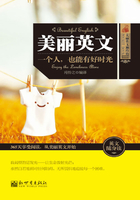On the sea-shores of all parts of the world live crabs of many kinds, more or less akin to each other; and some of these are amongst the most interesting and most crafty of creatures.
Perhaps the most popular of all, because it is at once widespread and curious, is the hermit crab.
Nearly all crabs have a fairly complete outfit of scaly armour, which is an excellent defence, though they have to change it from time to time. The hermit crab, however, is not so well protected.
It has a breastplate and head-piece of armour, but its hind part is soft and without defence, and it would be a dainty meal for many more powerful creatures if the crab were not clever enough to provide a defence for it, for crabs cannot seek safety in swift flight.
What, then, does the hermit crab do? It sets out to find more protection than Nature has given it. When it is young and inexperienced, it usually selects an empty shell on the beach, from which the original tenant has departed. Into this shell, after a critical examination from all points of view, it gets backwards, adapting its soft parts to the shapeof the shell.
The claws and front of the creature remain outside the shell, but the other parts, and the tail, adhere tightly to the shell by a sucker arrangement, so that you cannot"Into this shell it gets backwards. "
drag the crab out. Then, wherever the crab goes, it carries off the protective shell as if it were a part of itself.
All goes well for a time; but, of course, the crab grows, so that presently it gets too big for its shell and has to look out for one more suited to its age and size. Then it renews the search, and now our crab, with experience and confidence, will attack another crab inhabiting a shell which looks very desirable, and a fight will often follow to decide whether the present owner of the shell shall retain it or be dragged out and eaten by the victor. A greedy creature is the crab, eating anything he can find that is dead, or anything alive that he can master.
But the hermit crab is a great bully unless he is boldly tackled. Often he is called the soldier crab, probably from his readiness to do battle with his rivals, but perhaps because, like a soldier on the march, he has a way of carrying all his kit with him as he moves from place to place. Though fond of fighting, if he finds he has run up against a stronger resistance than he expected, he will not hesitate to scuttle off and seek safety in flight. If unexpected forms of danger surprise him, he shrinks as far as possible into his shell, squatting motionless as if dead, and closing the entrance into the shell with his tightly-clasped claws.
When looking for a new home, the crab goes about without his protecting shell; but, if danger threatens, he scuttles back to his old fortress. Usually, when he is foraging and not flitting from shell to shell, he takes his artificial protection with him. His method of progress is to hook on to something with his big claws, and then drag the shell with him in a snail-like movement, taking care not to expose any of his soft parts to view.
The romance of the hermit crab is far from being all told yet. Not only does he live in a borrowed and portable house, but he has a friend with him as a lodger. They share the home together, and each contributes something to the comfort of the other. This lodger is not another crab, but a sea anemone, which settles on the shell and remains there aslong as the crab lives inside. The advantage to the anemone"A sea anemone settles on the shell."
is that it is carried about by the crab, and so has far better opportunities of finding food than it would have if it were fixed to a rock; and the advantage to the crab is that the anemone is provided with stinging cells which keep off intruders, so that by sticking on the shell inhabited by the crab it acts as a very useful defence.
Sometimes inside the shell a kind of worm nestles with thecrab-a third inhabitant. What its use is to the crab no one can say, but the crab"s use to it has been observed, for, whenever the crab finds food, the worm has been noticed to protrude its head from its place of retreat and claim its share of the plunder. This kind of friendly partnership is common among creatures of quite different orders of being.
One species of the hermit crab carries a special anemone which spreads itself all over the shell in which the crab has inserted the back of his body, and also over the crab itself. When the crab has grown too large for the shell and must change to a larger shell, so much does he appreciate the shelter afforded by the anemone that he actually strips his comrade from the shell and takes it with him to his new home. What is even more remarkable still is the fact that the anemone, which ordinarily cannot be torn from the shell, does not resist the crab"s effort to remove it, but relaxes its hold as if to help. Having loosened the anemone from the shell, the crab carries it to his new home, and presses it gently against the shell till it has securely attached itself again.
In some countries, as in Jamaica, the hermit crab goes miles ashore into wet or marshy places, and can climb bushes and trees as easily as a mouse. It is very strange, when you are walking through the tangled undergrowth of tropical Jamaica, to look up and see a crab calmly walking along the branches overhead. This crab, often called a soldier, burrows holes in soft, damp ground, and there seeks safety whenever he fancies danger threatens him. Manyof the houses of Jamaica are built over such ground, on wooden or cement piles some feet from the ground, and in the ground underneath them the crabs find a favourite site for their burrows, so that it is not unusual to hear it said that there are soldiers under the house.
Perhaps the most famous of the crab family is the robber crab-an immense fellow, often over a foot long, found in the Pacific and Indian Oceans where the coconut palm grows. He has given up the habit of seeking security in a shell that did not belong to him, and now he grows his own shell over the sensitive part of his body. The reports that this great crab climbed up trees and flung down coconuts, which he proceeded to open by hammering on the eye-hole of the nut, were long dismissed as travellers" tales; but the tales were true; and methods have to be adopted to protect the fruit from the bold robber. It is found that a band of polished tin wrapped round the tree trunks a few feet above the ground is so slippery that neither the robber crab nor the rat, which also is a great nut thief, can mount the tree.
Another kind of crab, known as the sea spider, has equally curious habits. He goes about with a kitchen garden-or should we say a larder?-on his back. As he crawls about on the floor of the sea, he deliberately picks up with his pincers sponges, sea anemones, alg?, and small worms, and sticks them on his shelly back, which is covered with teeth and spines and wrinkles to which all these things adhere. Of course, he carries these lazy creatures on his back to pastures new, where theyfind fresh food, and in return they hide him from his foes, for by the time he has finished his collection the spider crab is quite concealed by the creatures on his back. But concealment is not the only advantage the spider crab gains from the collection on his back. It serves also as a portable larder. When the crab is hungry, he simply "puts in his thumb and pulls out a plum, " as Jack Horner did. As the creatures on his back have been taken where they have plenty of food, they thrive and multiply, and so the crab can feed according to his fancy from his larder, which is rapidly replenished.
A particularly crafty crab is one found in the Indian Ocean near the Seychelles Islands. He does not carry burdens on his back, but he carries an anemone on each of his claws. When the claws seize some animal the crab desires to eat, the anemones on the claws sting the wounded creature and so help the crab to overpower it. If the anemone be pulled off the claw of a crab, the crab hunts for the anemone, and again attaches it to the claw; and, if the anemone is cut in pieces, the crab carefully collects all the pieces, as if he were aware of the fact that even a small piece of sea anemone will grow into a complete specimen.
It may be thought that the crab is a selfish creature, using his cunning for his own advantage and against other forms of life; but he has many enemies that would eat him, and has need for all the wiles he has developed. The cod is one of the crab"s most successful enemies, and the hideous octopus regards him as the choicest product of the sea. It is not without a good cause,then, that the crab has learned that wisdom for him must mean concealment, as his worst enemies are very much swifter and stronger than he.
From My Magazine
Author.-My Magazine is edited by Arthur Mee, a living English journa- list. He has edited also the famous Children"s Encyclop?diu and The Chil- dren"s Bible.
How many species of crabs are mentioned? What have they in com- mon? How do they differ? After reading the lesson, tell the life-history of a crab. Tell any story of crabs you have seen. Look for Jamaica and the Seychelles on the map. What has made the crab so " crabby " (see last paragraph)? Argue the proposition that a crab has a right to life, liberty, and the pursuit of happiness. Is this true of all animals?















